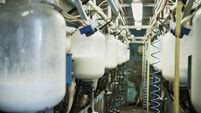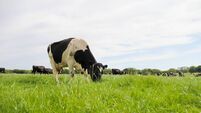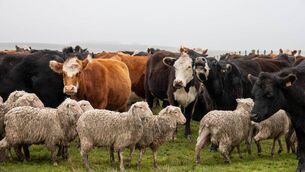How much more slurry storage will I need under the new Nitrates Action Programme?

Grant aid will be available through DAFM to support the construction of new storage, and an exemption from planning permission for certain standalone facilities is currently progressing through the legislative process. File photo
Slurry and soiled water storage requirements on dairy farms are set to increase significantly under proposals in the new Nitrates Action Programme (NAP).
A Teagasc survey of 100 representative dairy farms, carried out between July 2023 and March 2025, on the back of a commitment made in the last NAP, found that the volume of slurry produced per dairy cow is 21% higher than the figures currently used in regulation.
As a result, the Department of Agriculture has proposed increasing the slurry production rate from 0.33m³ to 0.40m³ per cow per week.
The same study showed that soiled water volumes are 43% higher than existing values. It is now proposed that soiled water production be set at 0.30m³ per cow per week, up from the current 0.21m³.
However, this requirement is proposed to be based on the number of cows being milked at critical times of year rather than theoretical peak cow numbers at any time during the year.
To give farmers time to plan and invest in additional storage, the new requirements will not come into effect until October 1, 2028.
Grant aid will be available through DAFM to support the construction of new storage, and an exemption from planning permission for certain standalone facilities is currently progressing through the legislative process.
Unlike previous regulations, the rate of soiled water produced per cow will be added as a new technical table to the draft Good Agricultural Practice (GAP) Regulations.
The published survey presents the levels of soiled water produced per month per cow, based on the peak number of cows being milked in the herd across the year.
To account for the drying off period for cows, and to reflect a more accurate volume of soiled water collected based on the number of cows that were producing milk at the time, the average volume of soiled water per cow to be brought forward under the regulations was based on re-calculated data from the Teagasc research, which excluded the winter months of November to February where most cows are likely to be dried off.
The draft plan acknowledges that increasing slurry and soiled water storage on farms will require planning, and significant on-farm investment and construction. Therefore, it is proposed that the measure will not come into effect until October 1, 2028.
It also stated that the construction of additional storage should be supported financially by DAFM and facilitated through an exemption in the Planning and Development Regulations, which is currently going through the legislative process.












